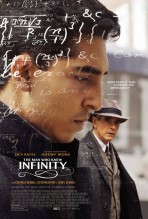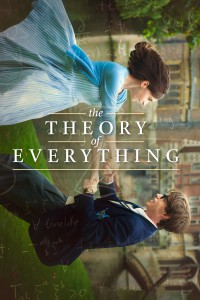Overview
Growing up poor in Madras, India, Srinivasa Ramanujan Iyengar earns admittance to Cambridge University during WWI, where he becomes a pioneer in mathematical theories with the guidance of his professor, G.H. Hardy.
This film tells the remarkable true story of Srinivasa Ramanujan (played by Dev Patel), who grew up in grinding poverty in Tamil Nadu at the end of the 19th century but proved to have a remarkable gift for numbers and mathematics. Even as a 15 year old he developed his own theorems in number theory, despite hardly any formal education. At 16 he obtained a library book on mathematics and studied it in depth, continuing his researches in his notebooks. He never completed a degree but managed to secure a job in a tax department whose boss happened to be interested in mathematics. His boss introduced him to other mathematicians and continued his research in his spare time while working as an account clerk. A local mathematics professor encouraged him to get his work evaluated by mathematicians in Britain, and Ramanujan wrote to an eminent Cambridge mathematician called Godfrey Hardy, sending him samples of his work. Although one of the theorems he sent had in fact already been proven previously (unbeknownst to Ramanujan) one other had not, and Hardy was intrigued enough to discuss the material with number theory specialist John Littlewood (played by Toby Jones), and the pair secured sponsorship to invite Ramanujan to Cambridge. After the lengthy boat journey in 1914 Ramanujan took up residence at Trinity College Cambridge, and his sponsors began working through Ramanujan’s research. Although he lacked formal education and some mistakes were found in some of his work, much of it proved to be groundbreaking and Ramanujan’s work was later recognised to be of great significance. He even has a number named after him: 1729. This happened to be the number of a taxi cab that Hardy had travelled in, and he remarked to Ramanujan that it was a very dull number. Ramanujan casually observed that in fact it was the smallest number (greater than 2) that can be expressed as the sum of two cubes in two different ways. It is now known as the Hardy-Ramanujan number, and “taxicab numbers” of this form are a minor subject of mathematical research.
The film follows Ramanujan’s real life reasonably closely, though in reality the young man did get some recognition in India for his work prior to his journey to Cambridge, leaving his young wife in India. Hardy is played by Jeremy Irons, who does a good job of portraying the other-worldly and rather cold and distant Hardy, who was better at numbers than he was with human relationships. The film follows their unusual collaboration as Hardy comes to realise the genius of Ramanujan and tries to get him to show greater mathematical rigour in proving his theorems. Ramanujan, a deeply religious man, said that theorems “were spoken to him by God”. Mathematics is a difficult subject for a filmmaker to portray, especially one as purely abstract as number theory, but it gamely manages to press on with the narrative by observing the reactions of others to Ramanujan’s work rather than tackling the impossible job of trying to explain it in layman’s terms – no audience is going to be able to understand the subtleties of Ramanujan’s work; indeed many of his mathematician colleagues struggled to. The direction is paced nicely, and does not dwell so much on the theme of casual racism that Ramanujan inevitably encounters in England that it becomes a polemic. Rather it successfully dramatises the challenges that this young man overcomes, 6,000 miles away from his home and family, in a strange country where he is regarded by most people he encounters as at best a curiosity. The patience of his wife is nicely brought to the screen by Devike Bhise in a fairly limited but sympathetic role, and the film never drags. There was enough drama in the real life of Ramanujan for the director Matt Brown not to have to deviate too much from historical fact, and he manages to pull the audience along and get them to engage with Ramanujan’s struggles for recognition and with his health and his family. This is a small but carefully formed film.
8/10






